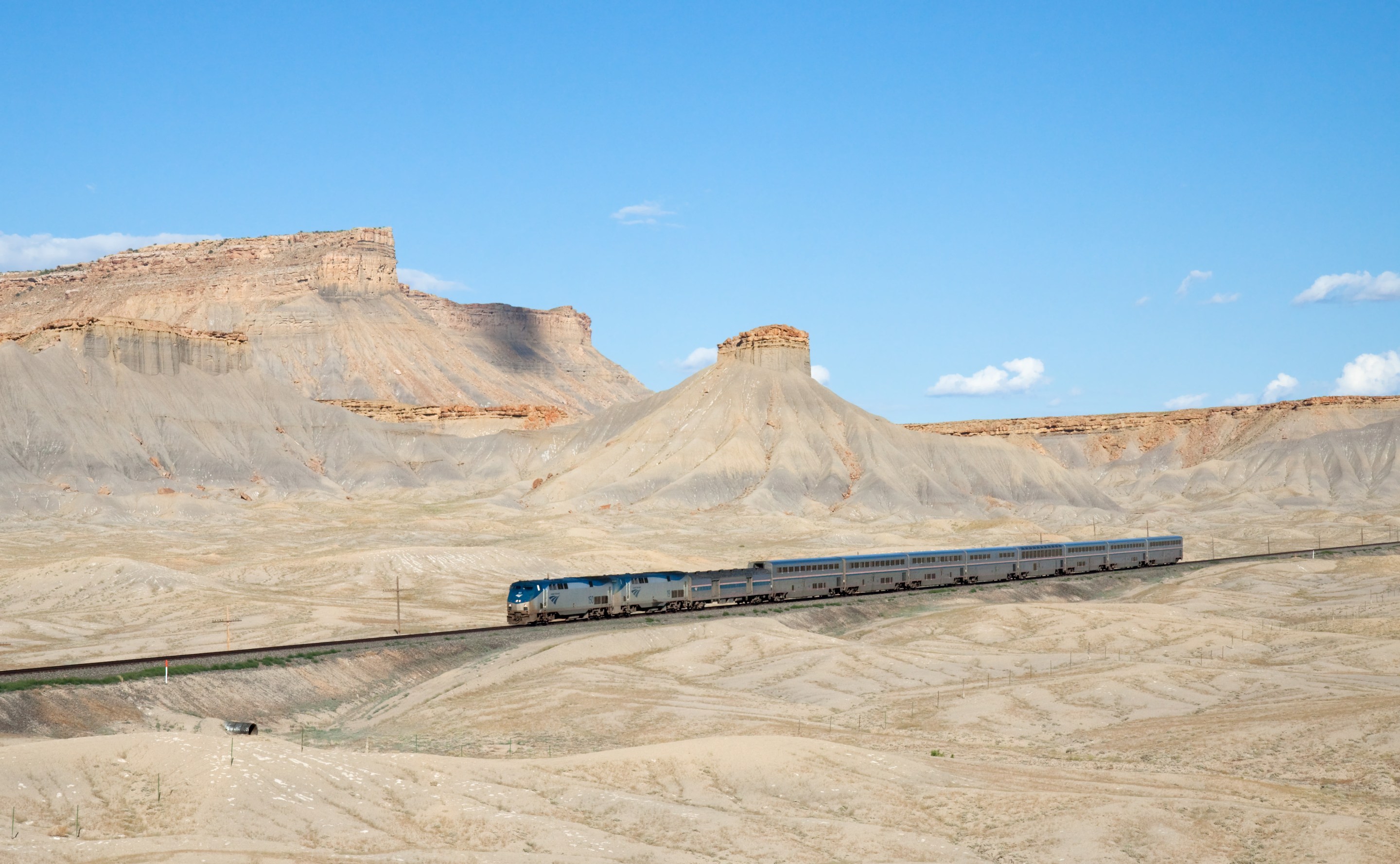Local public transit is not the only service threatened by COVID-19. Amtrak also faces budget shortfalls due to a significant drop in ridership caused by the pandemic.
Unfortunately, Amtrak’s leadership may not be taking a logical approach to its budget crunch — and the losers will be America’s so-called ‘Flyover Country.’
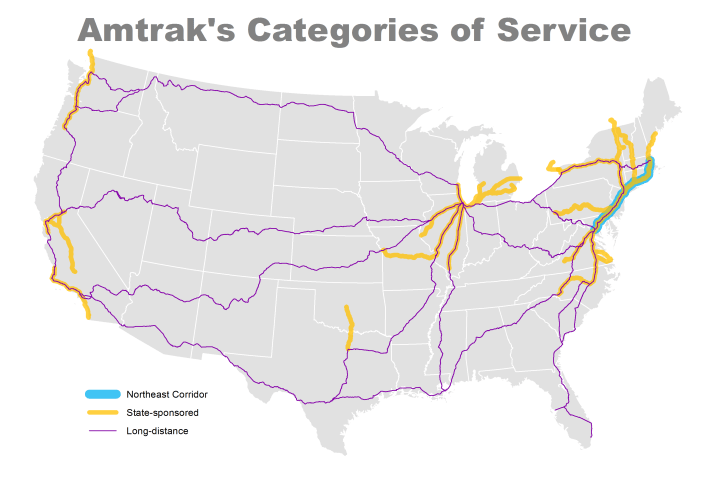
To understand why it's so challenging to save Amtrak from the financial ravages of the COVID-19 pandemic, it's important to understand the difference between the three categories of service it provides: state-sponsored, long-distance, and a small section known as the Northeast Corridor.
The Northeast Corridor stretches 457 miles from Washington to Boston and provides communities along the route with multiple trains per hour using tracks that are primarily owned and maintained by Amtrak.
State-sponsored services, by contrast, operate in 17 states around the country, where states have hired Amtrak to provide passenger rail service typically using tracks that are owned by freight railroads with routes from 86 to 704 miles.
Long-distance services crisscross America, typically using tracks owned by freight railroads with routes covering 764 to 2,438 miles featuring sleeping cars, dining cars, and ‘sightseer lounges.’
While all operate on rails, funding for the three types of service varies drastically. The fares paid on the Northeast Corridor roughly cover operating costs; however, fares do not fully pay for maintaining the Northeast Corridor, which has an estimated maintenance backlog of $38 billion. The costs of state-sponsored services not covered by fares are paid by the states sponsoring the routes, which essentially costs Amtrak nothing. Funding for long-distance routes has been hotly debated in recent years as Amtrak must request approximately $500 million annually from Congress in order to pay for long-distance operating expenses not covered by fares.
Amtrak has long been criticized for losing money on long-distance service. However, anyone who understands the benefits provided by public transit knows that this is the wrong way to examine the services provided by Amtrak. An economic benefit analysis performed by the national Rail Passengers Association reveals that the $500 million annual subsidy provided to Amtrak for long-distance trains results in an estimated $5 billion in benefits to the communities served by those routes.
The COVID Conundrum
COVID-19 has caused a substantial drop in Amtrak ridership. The table below breaks down Amtrak’s ridership by the three categories of service and compares January through July of 2019 with January through July of 2020.
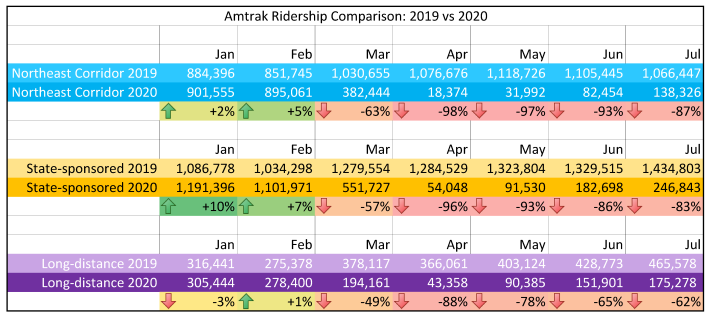
The graph that follows illustrates the table using absolute ridership. There is a sharp drop in ridership in March and April 2020, and the drop in ridership on the Northeast Corridor has been especially pronounced. Fewer riders rode Northeast Corridor trains during the entire month of April 2020 than rode the Northeast Corridor on an average day in April 2019!
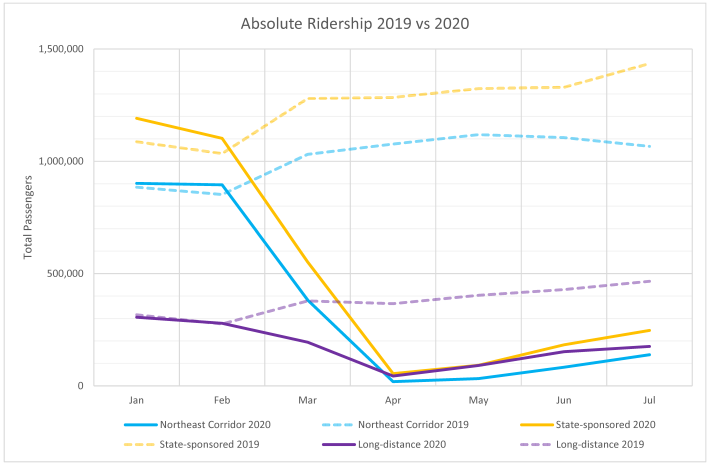
It is interesting to note that there were more riders on long-distance trains than on Northeast Corridor trains during April, May, June, and July. Amtrak earned more fare revenue from long-distance passengers than Northeast Corridor passengers during those months.
The drop in Amtrak ridership has not been evenly distributed across the three categories of service, which can be seen in the graph below, which shows the relative level of passengers comparing the percentage of passengers in 2020 to 2019. While ridership on the Northeast Corridor and state-sponsored trains dipped dramatically, ridership on long-distance trains did not dip as severely. Long-distance trains have retained their ridership better than Northeast Corridor or state-sponsored trains.
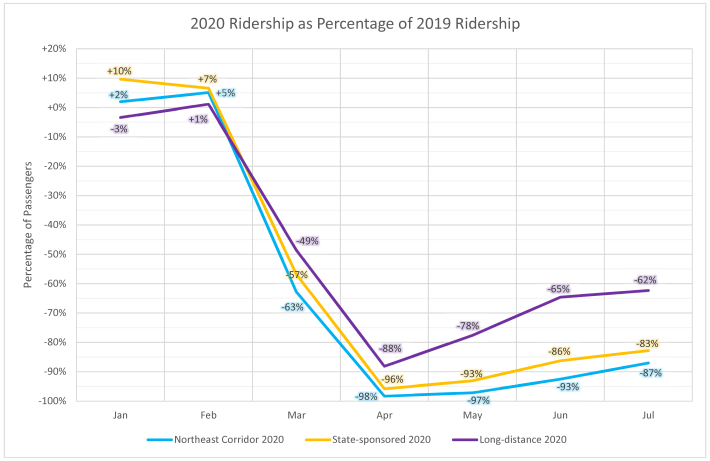
Amtrak’s Budget (Non-)Solution
Despite long-distance trains retaining more ridership, Amtrak is proposing a dramatic service cut to long-distance trains in October. Twelve long-distance trains that currently operate daily will be cut back to three times per week. Amtrak estimates this move will save $150 million during fiscal year 2021, a figure that has been revised to $213 million.
However, an economic benefit analysis performed by the national Rail Passengers Association reveals that while Amtrak may save $213 million during the coming fiscal year, the communities served by these trains will lose an estimated $3 billion in annual benefits.
One may think that gutting service from daily to thrice-weekly will result in a savings of 4/7ths. However, the fixed costs involved in providing passenger rail service do not drop when service is reduced. Ironically, by cutting service, Amtrak will actually make it less cost-effective to provide economic benefits to the communities served by long-distance trains.
As these communities await news of the impending cutbacks, Amtrak’s modus operandi has largely been silence. No announcements have been posted on its website to warn passengers. No public meetings have been held to gather feedback from communities regarding the service cut. Little notice has been given to its employees. Amtrak is making this change in an information vacuum.
Advocacy Efforts
Advocacy groups have tried to raise the alarm about Amtrak's dire straits. As reported in a recent
“Not unlike the Postal Service, Amtrak is a service," Jim Mathews, the president and chief executive of the Rail Passengers Association, said in a recent New York Times article. "The objective is not profit; the objective is to serve all the communities.”
While Amtrak claims the cuts to long-distance trains are not intended to be permanent, advocates remain skeptical.
The ridership metrics created by Amtrak to evaluate restoration of a route to daily service are unlikely to be met due to the inconvenience of the route having been cut to three times weekly. Of Amtrak’s fifteen long-distance routes, two already operate only thrice weekly and are Amtrak’s poorest-performing long-distance routes both in terms of revenue and ridership. In accordance with Jarrett Walker’s mantra of “frequency is freedom,” comparison of Amtrak’s long-distance routes reveals the inconvenience of having service available to passengers only three times per week causes an additional 32% drop in ridership beyond the expected 4/7ths drop caused by the reduction from daily service to three times per week.
Earlier this week, the House Transportation subcommittee on railroads, pipelines and hazardous materials held a hearing to discuss Amtrak’s response to COVID-19. As reported by Washington Post, Jim Mathews further emphasized the importance Amtrak: “The existence of Amtrak buoys the economies of hundreds of towns and cities all across America. Degrading that service means withdrawing those benefits from millions of Americans, even those who don’t necessarily ride the trains themselves, because in many cases lives and livelihoods depend on the routes’ operation. Amtrak is a taxpayer-supported public service. Its object is not profit, but to serve the nation. It cannot fulfill its mandate by cutting service for half the country during one of the most severe economic crises our nation has experienced and during a pandemic that has made air travel a perilous gamble for millions of Americans.”
Advocates have justifiable cause to be concerned about the return of service. In the aftermath of Hurricane Katrina, Amtrak service was suspended along the Gulf Coast between New Orleans and Orlando. Despite 15 years of effort, service has yet to be restored.
Eventually the pandemic will end and ridership demand will return to previous levels. The question is whether service will be available to meet that demand.
Mike Christensen, MCMP, CNU-A, AICP Candidate, resides in Salt Lake City, works as the Executive Director of the Utah Rail Passengers Association, and serves on the Board of Directors of the national Rail Passengers Association.
